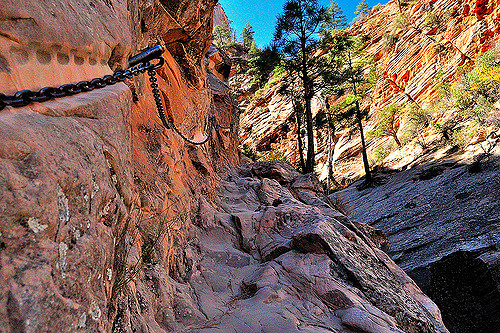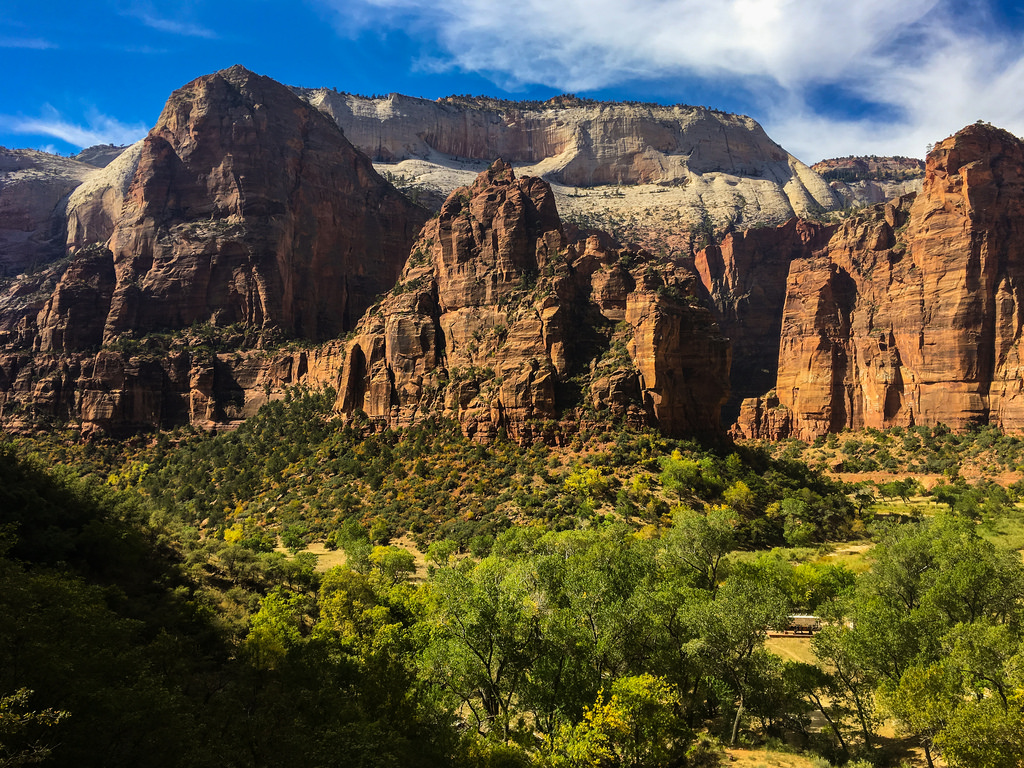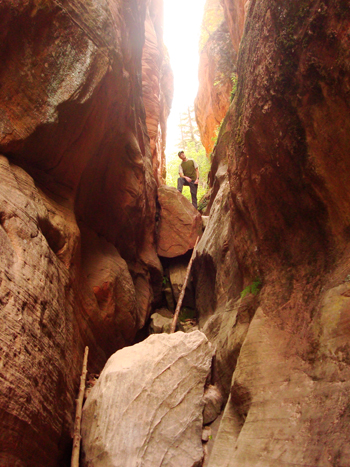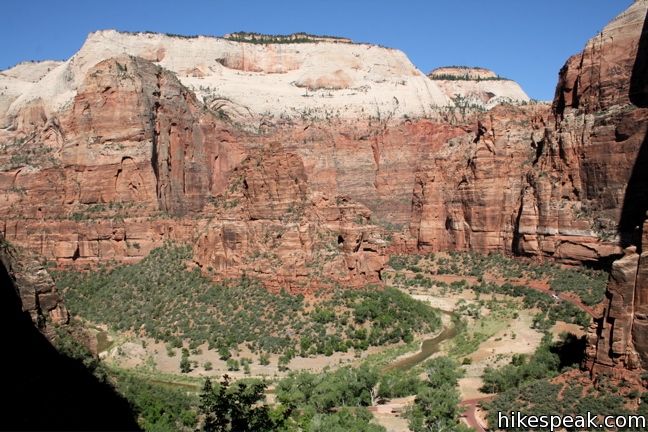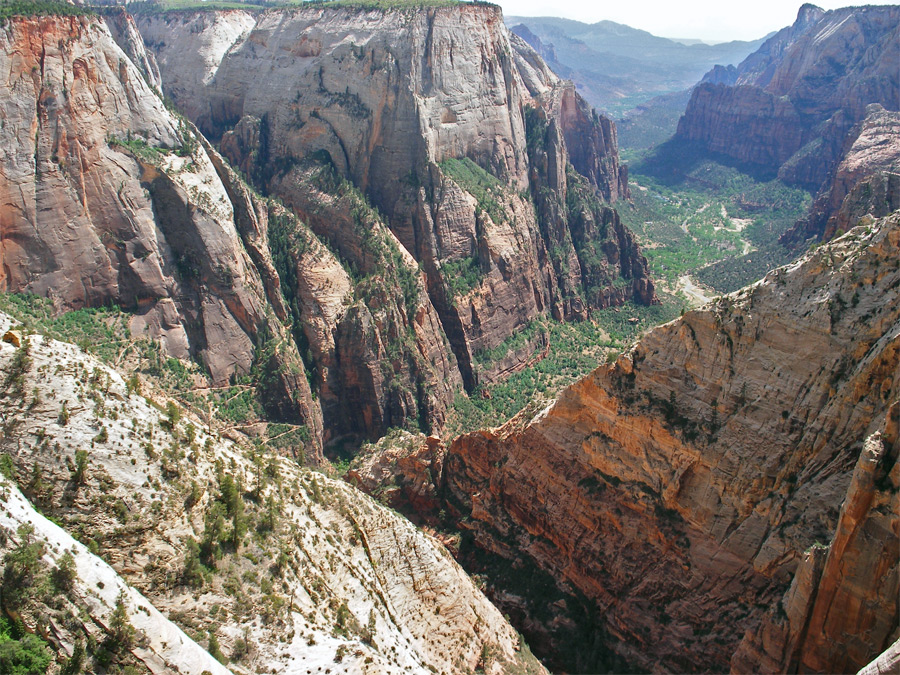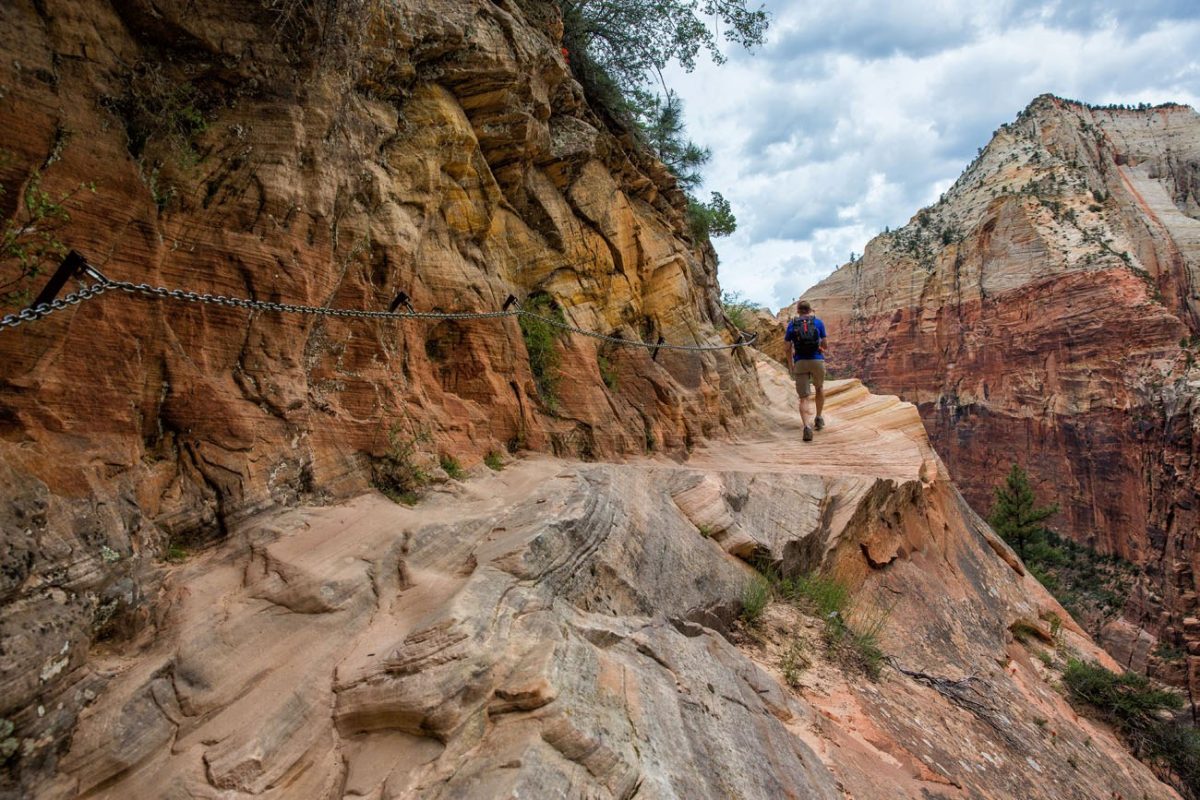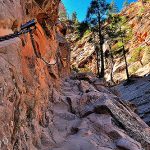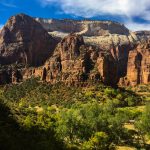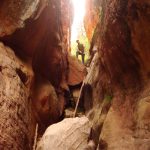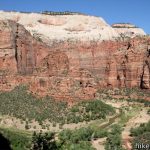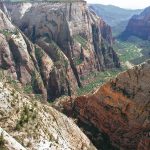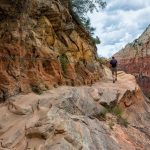Hidden Canyon Trail | Zion National Park Hikes | Zion Canyon Hiking Trail
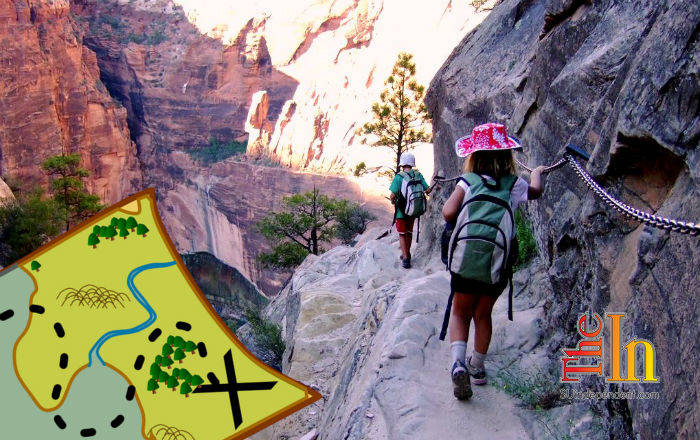 Article and photos by Bo Beck and Tanya Milligan
Article and photos by Bo Beck and Tanya Milligan
Day hike: Yes
Trail distance: 2.2 miles round-trip to the canyon entrance, but most will venture another 0.25 miles into Hidden Canyon.
Average hiking time: 3-4 hours depending on how far you choose to travel past progressively difficult obstacles. Be careful to only explore as far as you know is safe for you! Few should ever venture past the freestanding arch.
Difficulty: This is a busy and strenuous uphill hike on a well-maintained trail. There are numerous switchbacks on a narrow cliffside with exposure at high elevations. Some parts have chains to use for assistance. Be cautious near slippery sandstone areas with steep dropoffs.
Sun exposure: Expect full sun in most places after the early morning hours pass. It will be quite hot if you attempt this trail in the middle part of a summer day; however, once you are into the canyon, it is shady and surprisingly cool.
Trailhead: Weeping Rock parking lot
Trailend: Same as trailhead
Best season: March to October, but the path may be impassible when ice accumulates on the rock walkway in the winter. Zion National Park’s shuttles do not run in the winter, but you can drive into the canyon when they are not operating.
Elevation gain: 1,000-foot ascent
Restrooms: Weeping Rock Trailhead
Dog-friendly: No
Water availability: Although short, this hike is steep and in full sun, so do not go without at least three quarts of water per person.
Hidden Canyon is one of Zion National Park’s unique trails that challenges the average hiker with steep ascents and narrow chain-aided footpaths.
The classic Zion Canyon Trail was developed in 1928, a year after the “hanging canyon” — dubbed “Hidden Canyon” — was discovered. William Evans tried to climb the Great White Throne in 1927 but fell during the attempt. While searching for the climber, who was miraculously found alive, rescuers discovered a secluded oasis. Today, a well-traveled path takes trekkers between sheer sandstone walls rising up hundreds of feet, made up by some of Zion’s most famous landmarks: Cable Mountain and the Great White Throne. Once beyond the end of the actual trail and into the slot canyon, look for small sandstone caves and a 20-foot long arch. The structure sits at ground level but is missed by most, due to the greenery on and near the natural structure that allows it to blend in as a chameleon would with its background.
Directions to Hidden Canyon Trail | Zion National Park Hike
Directions: This impressive 2.2-mile roundtrip hike begins at the same busy trailhead as Weeping Rock, Observation Point, and the East Rim. Begin walking on the hard surface on the Weeping Rock Trailhead, which quickly splits to the left. The trail you want to follow bears right toward the East Rim, Observation Point, and Hidden Canyon. Watch for a sign that indicates the direction to Hidden Canyon.
Several short switchbacks ascend to a saddle before contouring around a large bowl. From this point, the trail will follow narrow ledges that have been blasted out of the sheer rock face. Stanchions and chains offer security to those leery of the narrow path.
After several twists and turns, the mouth of Hidden Canyon finally appears. “Moki steps” carved into the slickrock allow access into the canyon itself. Sandstone pools at the end of this hike are a favorite spot of the delightful and boisterous canyon tree frogs. Look for the tiny gray creatures near the water, and listen for their loud trilling. Past the pools is a sign stating that this is the end of the Hidden Canyon Trail. A short path does continue for another quarter-mile and a small, freestanding arch is located near where most people will decide to turn around due to obstacles. Directly across from the arch is a flat wall adorned in moss called the Green Wall.
If you had the desire, proper climbing equipment, and skills, you could continue out of the canyon and onto the upper east plateau. The second freestanding arch in Hidden Canyon is near the top, where only a few skilled canyoneers and climbers have explored.
On the trek back down, note the antique cable draw on Cable Mountain as well as the intoxicating view. It includes views of Big Bend, Angels Landing, Cathedral Mountain and the Organ.
